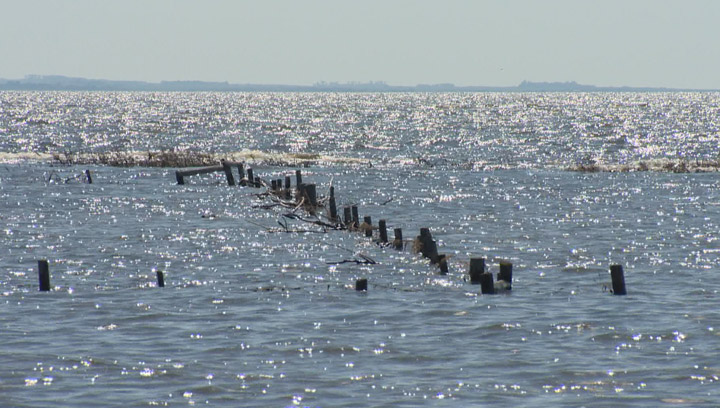New research suggests salty lakes common across the Prairie landscape are having different climate change effects than those with softer water. The paper, published in the journal Nature, says lakes in northern latitudes with hard, alkaline water are now helping remove carbon from the atmosphere instead of releasing it.

What’s more, climate change itself is exaggerating the effect, said co-author Kerri Finlay of the University of Regina.
“They started off like the soft-water lakes – they were releasing CO2,” she said. “But more recently, they started pulling it in.”
Scientists have long held that lakes emit much more of the carbon dioxide that causes climate change than they absorb.
Carbon from forests, fields and lawns drains into lakes and is consumed by organisms. Fish and plants then breathe it back into the water and it eventually escapes into the atmosphere.
Things have been changing since climate change reduced the amount of time those lakes spend covered with ice, which tends to make lakes more acidic. Less ice means less acidification.
For lakes that were alkaline to begin with, less ice has increased that characteristic to the point where exhaled carbon behaves differently. Instead of bubbling into the air, it forms a solid compound called carbonate.
The threshold for that switchover happens at a pH level of about 9. Finlay said that the Saskatchewan lakes her team were studying originally had a pH of around 8.5, but by about 2003 had reached the threshold and have been creeping up ever since.
- Ontario First Nation declares state of emergency amid skyrocketing benzene levels
- Singh mulls TikTok return as U.S. nears potential ban over security fears
- More financial institutes are offering crypto-services, survey shows
- Possible TikTok ban in U.S. looms after Biden signs bill, setting up legal fight
The carbon absorption could be significant. Finlay said some estimates place the amount of salty water in inland bodies at almost equal to the amount of soft water – although the salty total is dominated by one water body, the Caspian Sea.
READ MORE: SaskPower says carbon capture and storage is working, despite critics
“Any area where you have fairly dry climate with a lot of evaporation and fairly productive soils, you’ll get saline.”
She estimates the 11,500 square kilometres of salty lakes in her study are capturing about 1,150 tonnes of carbon a year more than they did in the mid-1990s. That’s roughly equal to one-quarter to one-third the amount of carbon released by agriculture in the same area.
It’s hard to say how the findings will change global calculations of carbon emissions from lakes, Finlay said.
“Our estimates have been pretty poor,” she said. “Lakes have really been ignored in terms of global carbon budget and very few people are considering them.”

Comments